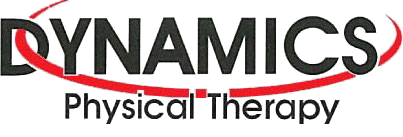CrossFit is a fast-growing form of high-intensity functional training.
The fitness regimen focuses on strength and conditioning to optimize physical performance in ten different domains:
1. Speed
2. Power
3. Agility
4. Balance
5. Endurance
6. Accuracy
7. Strength
8. Stamina
9. Flexibility
10. Coordination
Emphasis is also placed on varying movements and increasingly challenging tasks. The main elements of CrossFit include cardiovascular activities (e.g., rowing, running, and swimming), weightlifting techniques (e.g., barbell lifts, presses, and squats), and gymnastics (e.g., flips, ring exercises, or handstands). The primary goals of CrossFit involve maximizing your body’s physical potential, improving muscle tone, and enhancing body composition.
 In addition, CrossFit is different from conventional exercise routines because it also incorporates other aspects of health, such as achieving heightened levels of power, establishing proper dietary habits, training in multiple domains, and reinforcing biological processes (e.g., muscle memory). Another key component of the CrossFit training regimen is metabolic conditioning—a high-intensity circuit-type routine that helps maximize your body’s physical capacity. This benefit is achieved by improving mechanical responses to challenging exercises. More specifically, metabolic conditioning routines enhance the way your body stores and utilizes energy during vigorous activities.
In addition, CrossFit is different from conventional exercise routines because it also incorporates other aspects of health, such as achieving heightened levels of power, establishing proper dietary habits, training in multiple domains, and reinforcing biological processes (e.g., muscle memory). Another key component of the CrossFit training regimen is metabolic conditioning—a high-intensity circuit-type routine that helps maximize your body’s physical capacity. This benefit is achieved by improving mechanical responses to challenging exercises. More specifically, metabolic conditioning routines enhance the way your body stores and utilizes energy during vigorous activities.
However, it is important to note that this high-intensity workout regimen is associated with an increased risk of injury. Furthermore, studies indicate that CrossFit is linked to similar risks as competitive weightlifting and powerlifting. However, CrossFit has a lower risk of injury than running recreationally. This means that, as with any vigorous activity, it is important to incorporate strategies that prevent serious injuries. This includes learning correct body mechanics, which are techniques a CrossFit trainer, instructor, or physical therapist can demonstrate before you decide to participate in CrossFit training.
Approaches that Reduce the Risk of CrossFit Injuries
Before participating in CrossFit activities, beginners are encouraged to enroll in introductory classes where instructors demonstrate foundational, fundamental movements as well as proper form for each exercise that will be performed. One of the main reasons that CrossFit training is linked to serious injuries is due to the improper execution of different techniques. For instance, Olympic lifting is a key component of CrossFit that can lead to neck and back problems, spinal bone fractures, or a spinal disc injury for enthusiasts who are not following a proper strength and conditioning regimen. Attending introductory classes ensures that athletes are learning exercises specifically designed for CrossFit, along with techniques that help build muscle memory to promote enhanced performance in a safe manner.
Another useful strategy involves working with a physical therapist before and during your CrossFit training. If you experienced an injury during CrossFit activities or want to learn strategies that will prevent future injuries, the physical therapists at Dynamics Physical Therapy can help. It is important to maintain proper body posture when performing complex movements and to understand the difference between mild movement-related discomfort and pain that may lead to an unexpected injury. By working with one of our highly trained physical therapists, you will learn to recognize when it is time to take a break or adjust your routine to avoid pushing your body beyond its limit.
During most CrossFit training sessions, a combination of high-intensity exercises is executed quickly, repeatedly, and with little to no recovery time between sessions. These dynamics can make it hard to determine the amount of mechanical stress your bones, muscles, and tendons can endure during and between each set. Guidance from a physical therapist can help you navigate your CrossFit journey more efficiently.
Call Dynamics Physical Therapy in Northern Virginia to discuss how individualized physical therapy services can complement your CrossFit program.
References
1. Claudino JG, Gabbett TJ, Bourgeois F, et al. CrossFit overview: Systematic review and meta-analysis. Sports Med Open. 2018;4(1):11
2. Beers E. Virtuosity goes viral. CrossFit J. 2014;6:1-10.
3. Glassman G. What is fitness? CrossFit J. 2002;3:1-11.
4. Eather N, Morgan PJ, Lubans DR. Improving health-related fitness in adolescents: The CrossFit teens™ randomised controlled trial. J Sports Sci. 2016;34:209-223.
5. Friedman MV, Stensby JD, Hillen TJ, et al. Traumatic tear of the latissimus dorsi myotendinous junction: Case report of a CrossFit-related injury. Sport Heal. 2015;7:548-552.
6. Weisenthal BM, Beck CA, Maloney MD, et al. Injury rate and patterns among CrossFit athletes. Orthop J Sport Med. 2014;2:2325967114531177.å


